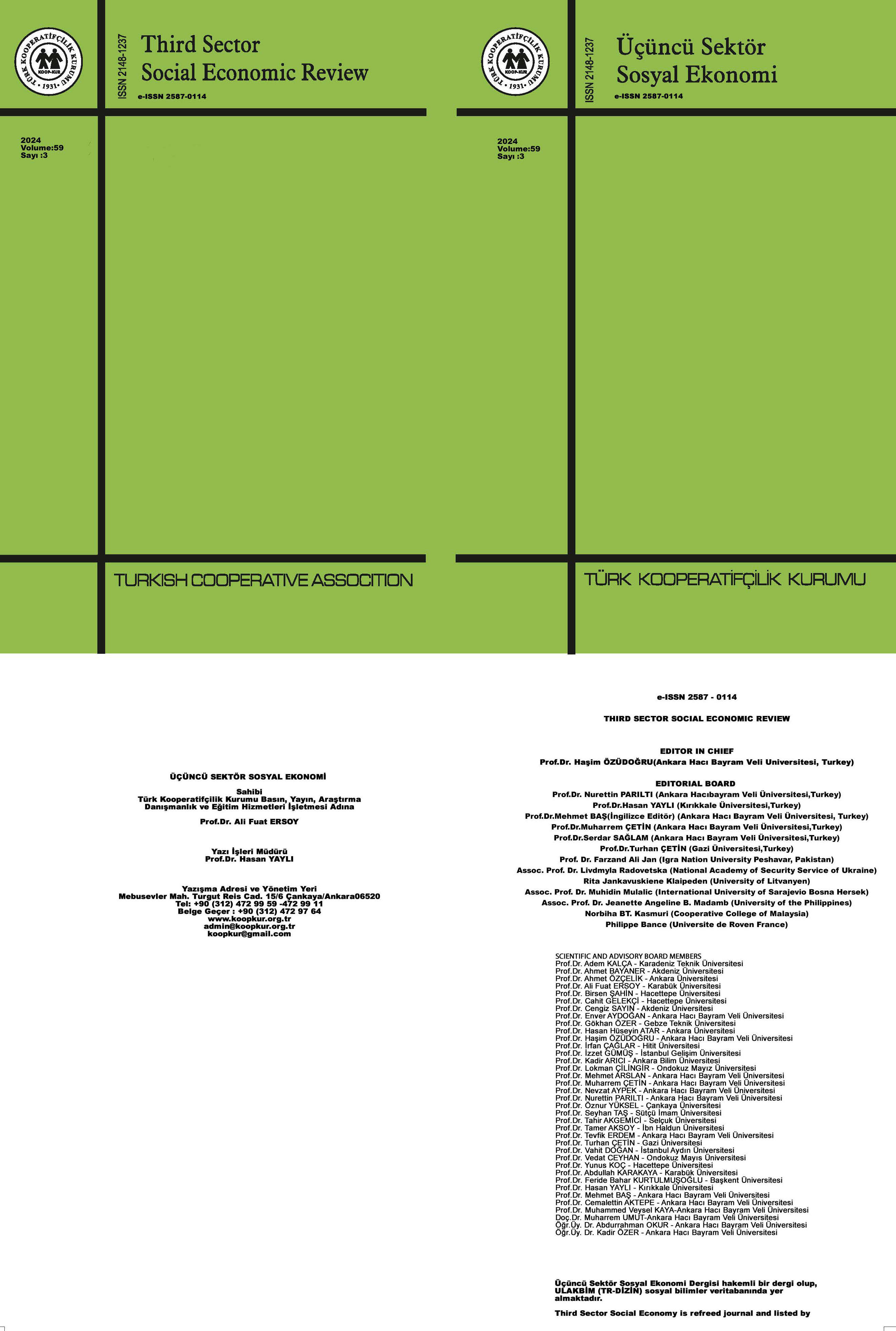BANKACILIK FAALİYETLERİNİN KARBON (CO2) EMİSYONU ÜZERİNDEKİ ETKİSİ: AVRUPA BİRLİĞİ ANALİZİ
DOI:
https://doi.org/10.15659/3.sektor-sosyal-ekonomi.24.08.2404Anahtar Kelimeler:
CO2 Emisyonu- Sürdürülebilirlik- Yeşil Bankacılık- AB27- Bankacılık FaaliyetleriÖzet
Bu çalışma Euro Bölgesi’nde (AB27) finansal sektörün çevresel sürdürülebilirlik üzerindeki etkisini incelemektedir. Çalışma için kullanılan veriler, 2006 ile 2022 yılları arasındaki dönemi kapsayan 27 Avrupa ülkesine ait verileri içermektedir. Bu veriler, Dünya Bankası ve EDGAR (Emisyon Veritabanı) veri tabanından alınmıştır. Çalışmada verilerin analizi EViews 13 (Quantitative Micro Software) ile yapılmıştır. Seriler arasındaki ilişkiyi tespit etmek için Panel Veri Regresyon Yöntemi kullanılmıştır. Bankacılık sektöründe yıllara göre pozitif değişim gösteren banka şube ve ATM sayılarının ve kredi hacmindeki artışın belirlenen dönem içerisinde CO2 emisyon miktarını doğrudan pozitif yönde etkilediği görülmektedir. Kredi hacmindeki bir birimlik artış, CO2 emisyonunu %0.3 artırırken, bankaların şube sayısındaki bir birimlik artışın CO2 emisyonunu %0.7 artırdığı ve ATM sayısında meydana gelen bir birimlik artışın CO2 emisyonunu %0.03 artırdığı görülmüştür. Bu sonuçlar, bankacılık sektörünün çevresel etki üzerinde önemli bir etkisi olduğunu göstermektedir. Her ne kadar bankacılık sektöründe güneş enerjili ATM, karbon ayak izi takibi ve çevreye duyarlı gibi çevreci uygulamalar hayata geçiriliyor olsa bile bunun başarılı olup olmadığı CO2 emisyon verilerine yansıması gerekmektedir. Sürdürülebilir kredi politikaları, yeşil şube ağları, teknolojik dönüşüm ve yeşil yatırım stratejileri gibi önlemler CO2 emisyonu hedeflerine ulaşmada yardımcı olabilir.






